
Small hydro is the development of hydroelectric power on a scale suitable for local community and industry, or to contribute to distributed generation in a regional electricity grid. Exact definitions vary, but a "small hydro" project is less than 50 megawatts (MW), and can be further subdivide by scale into "mini" (<1MW), "micro" (<100 kW), "pico" (<10 kW). In contrast many hydroelectric projects are of enormous size, such as the generating plant at the Three Gorges Dam at 22,500 megawatts or the vast multiple projects of the Tennessee Valley Authority.

The electricity sector in Norway relies predominantly on hydroelectricity. A significant share of the total electrical production is consumed by national industry.
According to the International Hydropower Association, Canada is the fourth largest producer of hydroelectricity in the world in 2021 after the United States, Brazil, and China. In 2019, Canada produced 632.2 TWh of electricity with 60% of energy coming from Hydroelectric and Tidal Energy Sources).

Kenya Electricity Generating Company PLC abbreviated to KenGen, is a government enterprise in the Republic of Kenya charged with the production of electricity for the country. KenGen is the largest electric power producer in Kenya, generating over 60% of the electricity consumed in the country.
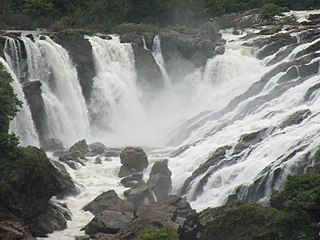
India is 5th globally for installed hydroelectric power capacity. As of 31 March 2020, India's installed utility-scale hydroelectric capacity was 46,000 MW, or 12.3% of its total utility power generation capacity. Additional smaller hydroelectric power units with a total capacity of 4,683 MW have been installed. India's hydroelectric power potential is estimated at 148,700 MW at 60% load factor. In the fiscal year 2019–20, the total hydroelectric power generated in India was 156 TWh with an average capacity factor of 38.71%.
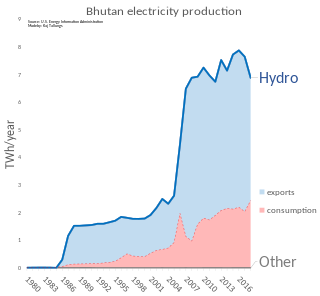
Energy in Bhutan has been a primary focus of development in the kingdom under its Five-Year Plans. In cooperation with India, Bhutan has undertaken several hydroelectric projects whose output is traded between the countries. Though Bhutan's many hydroelectric plants provide energy far in excess of its needs in the summer, dry winters and increased fuel demand makes the kingdom a marginal net importer of energy from India.

Renewable energy in Nepal is a sector that is rapidly developing in Nepal. While Nepal mainly relies on burning biomass for its energy needs, solar and wind power is being seen as an important supplement to solve its energy crisis. The most common form of renewable energy in Nepal is hydroelectricity.
Nepal Electricity Authority (NEA), founded on 16 August 1985, is the parent generator and distributor of electric power under the supervision of the government of Nepal.
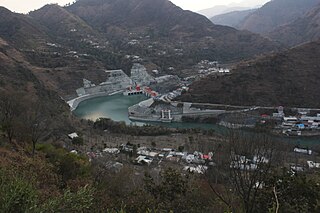
Patrind Hydropower Plant is a run-of-the-river, high head project of 110 metres (360 ft), located on Kunhar River near Patrind Village right on the border of Abbottabad District of Khyber Pakhtunkhwa Province and Muzaffarabad city of Azad Kashmir, Pakistan. It is approximately 138 kilometres (86 mi) from Rawalpindi and Islamabad and about 76 kilometres (47 mi) from Abbottabad city.
Panauti Hydropower Station is the third hydropower station which was constructed in Nepal, in 1965. It is the first megawatt (MW) capacity hydropower station in Nepal.

Hydroelectricity is currently China's largest renewable energy source and the second overall after coal. According to the International Hydropower Association, China is the worlds largest producer of hydroelectricity as of 2021. China's installed hydroelectric capacity in 2021 was 390.9 GW, including 36.4 GW of pumped storage hydroelectricity capacity, up from 233 GW in 2011. That year, hydropower generated 1,300 TWh of power, an increase of 68 TWh over 2018 when hydropower generated 1,232 TWh of power, accounting for roughly 18% of China's total electricity generation.

The Upper Tamakoshi Hydroelectric Project is a 456 MW peaking run-of-the-river hydroelectric project in Nepal. It is the largest hydroelectric project in Nepal, operating since July 2021. It is sited on the Tamakoshi River, a tributary of the Sapt Koshi river, near the Nepal–Tibet border.
Zambia is potentially self-sufficient in sources of electricity, coal, biomass and renewable energy. The only energy source where the country is not self-sufficient is petroleum energy. Many of the sources of energy where the country is self-sufficient are largely unexploited. As of 2017, the country's electricity generating capacity stood at 1,901 megawatts.
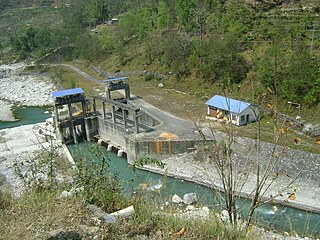
Modi Khola Hydroelectric Power Plant is a run-of-river hydro-electric plant located in Parbat district of Nepal. The flow from Modi River is used to generate 14.8 MW electricity. Annual energy generation capacity is 92.5 GWh. This power plant began operating in 2000 and is owned by the Nepal Electricity Authority (NEA).
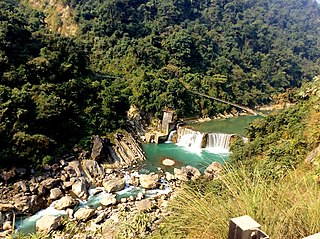
Tinau Hydropower Plant is a run-of-river hydro-electric plant located in Rupandehi District of Nepal. The flow from Tinau River is used to generate 1.024 MW electricity.
Upper Trishuli 3A Hydropower Station is a run-of-river hydro-electric plant located in Rasuwa District of Nepal. The flow from Trisuli River is used to generate 60 MW electricity.
Upper Mai-C Hydropower Station is a 6.1 MW run-of-river hydro-electric plant located in the Ilam District of Nepal. It is powered by water from the Mai Khola.
Rudi A Hydropower Station is a run-of-river hydro-electric plant located in the Kaski District of Nepal that came into operation in 2019. The flow from the Rudi River is used to generate 8.8 MW electricity.
Solu Hydropower Project Hydropower Station is a run-of-river hydro-electric plant located in Solukhumbu District of Nepal. The flow from Solu River is used to generate 23.5 MW electricity.













